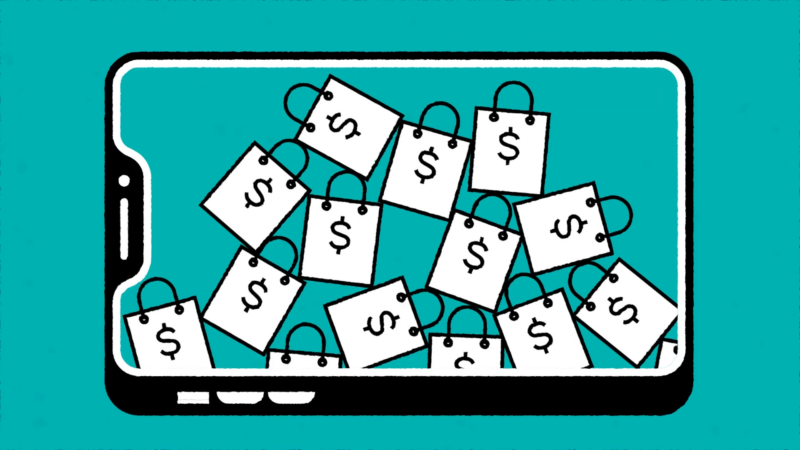Once upon a time the notion of shopping for something on the Internet was novel, exciting, and unusual. It can be easy to forget that nowadays, where we live in a context utterly transfigured by the impact of online goods and service providers.
And yet for a good number of years, it was not considered a foregone conclusion that online retail would grow to the extent it has today. The impact of our modern digital commercial market can be most prominently traced to the arrival of the single most successful product in human history, of the smartphone.
This impact is hard to overstate. Dating the true origins of the smartphone is a tricky proposition, as before the iPhone came along there were numerous devices on the market that could do what Apple and their star product could, albeit with less refinement.
Touchscreens were becoming increasingly common, WiFi and cellular browsing connectivity were becoming standard on enterprise devices like the Blackberry Communicator, and even installable third-party app stores were nothing to write home about.
Though there’s no denying that when Steve Jobs strode onto the stage in 2007 to unveil the iPhone to the world, it marked a significant shift in what people thought smartphones were, who they were for, and what they could be used for.
It would take several years for this revolution to gather steam – many people don’t even recall that the very first iPhone had no app store to speak of – but eventually, this would become an all-new and mass consumer product category.
It wouldn’t be until the early years of the 2010s that smartphones became exceptionally popular, and this led to a noteworthy uptick in global eCommerce revenues, with global sales breaking $1 trillion for the first time in 2012.
While there are many reasons why the smartphone has to be such a big factor in digital transformation, there are some core reasons we can point to as to why this is the case.
While there are many reasons why the smartphone has become such a big factor in digital transformation, there are some core reasons we can point to as to why this is the case. One crucial aspect is the seamless integration of essential applications like the Mail App, which, when experiencing updating issues on iPhones, underscores the importance of ongoing technological advancements to ensure uninterrupted connectivity and functionality.
Big Data

One of the market assets of modern eCommerce is its ability to draw on phenomenal data sets in order to develop products, pitch marketing campaigns and connect with targeted demographics.
Nowhere is this more apparent than within the realm of social media, a phenomenon that predated smartphones by a number of years – though it wasn’t until the rise of these popular devices that the likes of Instagram, Twitter and TikTok would become household names.
Instagram, WhatsApp, and Facebook parent company Meta’s entire business model is built atop the collection and resale of its users’ data. In sharing our lives and interests online with these organizations, we have in many ways done the hard work for advertisers.
Now, a brand looking to sell a new product or promote some new campaign need only pay for the privilege of having its material boosted by the likes of Meta. What makes this significantly different from classical marketing – such as running a TV advert – is that such a digital campaign will be able to specify its target demographic to an incredibly fine level of detail.
Suppose you want to target your advert exclusively to West Coast men between the ages of 25 and 34 who are into ultimate frisbee, then you can do that. By people able to conduct surgical micro-campaigns like this, brands can keep costs down, enjoy a high conversion rate, and enjoy the capacity to run several such campaigns simultaneously.
Today an estimated 75% of all internet users are now shopping sometimes or always on social media platforms like Instagram as a result of this.
Promotional Efficacy

The hardest part of marketing is getting your product or advert in front of the correct person or demographic. E-commerce adds layers of complexity to this, as the potential market is much larger, but there is far greater competition.
This has led to diverse sectors experimenting with novel ways of boosting organic reach and increasing digital footfall. Take, for example, the online gaming sector. This industry has long embraced the disruptive benefits of technology as it has sought to carve out its own identity and platform distinct from its brick-and-mortar origins.
The smartphone has played a large part in this process, and these devices have become the chief means by which gaming aficionados have come to source industry information and advice from platforms like CasinoReviews in the UK and other regions.
Such sites leverage deep affiliate relationships in order to furnish patrons with competitive deals and sign-up offers for leading digital gaming providers. In so doing they utilize the on-demand and highly accessible advantages of the smartphone platform to cut through the noise and connect with new and returning players in markets around the world.
Local Regeneration

The world we live in has changed a lot over the past ten years, and one of the most noteworthy components of this has been a growing reliance on eCommerce over physical shopping. Now more people than ever conduct the majority of their shopping through digital platforms with around $4.66 trillion spent in sales last year.
This has had quite an unexpected impact, or at least one that goes against some conventional opinions. Those views held that the dominance of eCommerce would lead to town centers and shopping malls crumbling with storefronts closing down, unable to compete with the likes of Amazon or Walmart.
Undeniably it is true that many mid-sized chains and non-specialist stores have found no recourse to compete in the modern retail landscape, but this is not to say our towns have become a wasteland. Rather, new developments have sprung up to take the place of these large department stores.
Town centers are experiencing a regeneration towards the kinds of experiences and services that eCommerce cannot offer. These range from recreational experiences like Ax Throwing and Escape Rooms to an abundance of eateries and bars. It has also resulted in so-called high-concept stores enjoying greater room and freedom to differentiate themselves from digital offerings.








